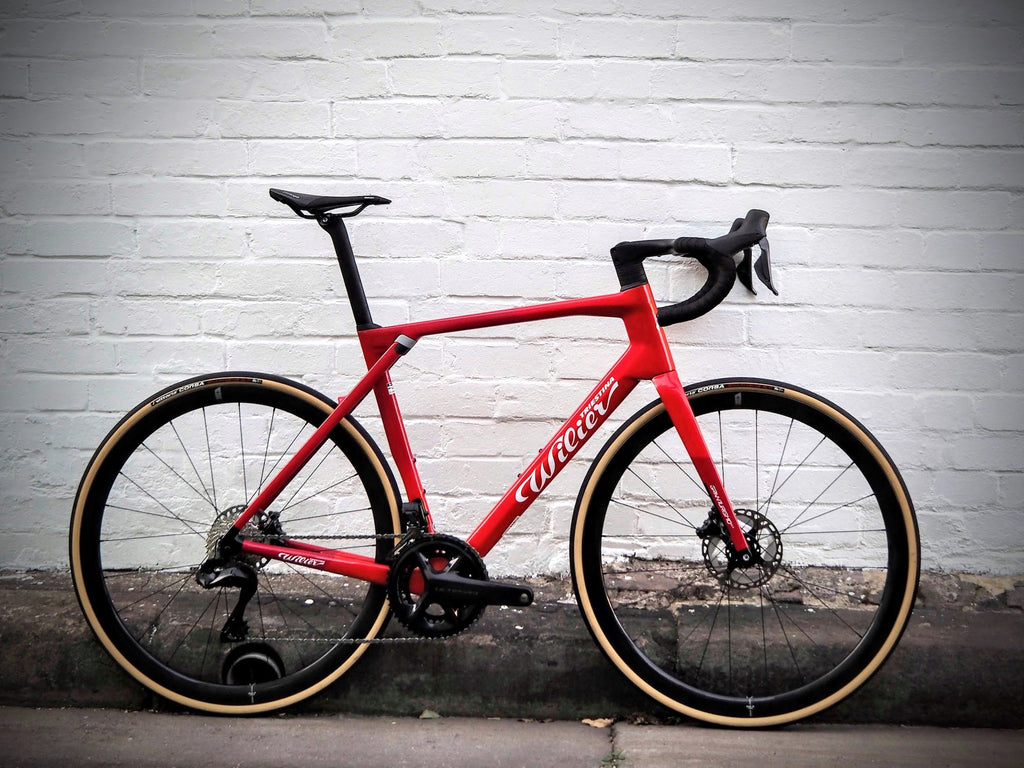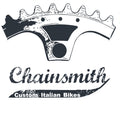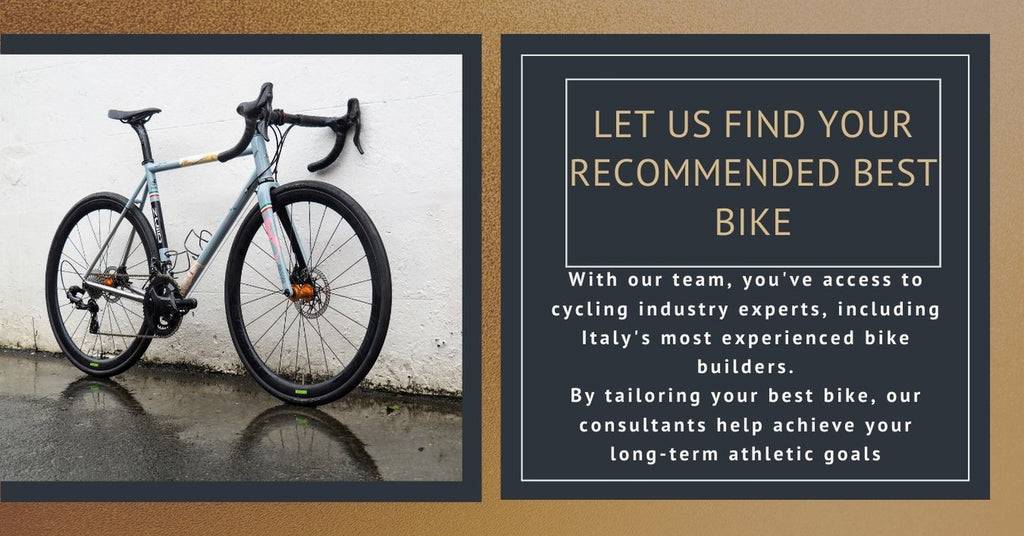Aerodynamics is ranked in the top three priorities when it comes to bike buying. Paradoxically, majority of clients researching bikes aren't motivated to race. Instead, they aspire to join endurance rides. It begs the question, if you're on the edge of investing a bike for endurance, are you better committing to a bike that positions you with an aerodynamic advantage or endurance comfort?
There are several points to touch before we look at benefits, (or lack of), when it comes to endurance. Firstly, what do riders consider "aerodynamic"?
Aero design as a general rule aims to minimise friction or drag and help achieve and maintain power and speed to the best of the riders ability. There are several ways a frame design is engineered to assist speed. A frame’s carbon layout and tube shape contribute to stiffness, responsiveness and reduced drag. But important to note is that 64%–82% [1] of the total drag of a cyclist is caused by the riders body which includes wearables like your helmet, glasses, shoes and apparel, The bike itself accounts for the rest. Hence, frame design is important but not as much as geometry - which dictates a riders position for optimal aero efficiency.
The aerodynamic position is designed for a higher level of rider flexibility and strength than an endurance geometry and here lies the issue. Unfortunately with our modern style living, amateur athletes are often seated long hours without incorporating stretching or strength training. This adapts our bodies to assume position unconducive to performance focused cycling. The positions needed to ride a frame designed for aero advantages isn’t sustainable for those of us with limited range of mobility, low levels of flexibility and minimal strength.

Italian frame builders Titici create in-house tubing with aerodynamic engineering
Paradoxically, against logic, many of us romance over the aero profile of a bike. Check #slamthatstem on instagram and you’ll appreciate the minimalist streamlined aesthetic. Many riders will go a step further to buy a frame that places aero advantage before their comfort or practicality. This may be based on the attractive appearance of clean minimalism, or the assumption they’ll gain greater performance achievements. Because overall the combined manufacture qualities of an aero frame plus optimal ride position are touted to increase speed and power. And its this term "speed" which is keenly heard by riders wanting to perform well and keep up with the bunch.
Speed (keeping up with the bunch) has become synonymous with the term aerodynamic. And for this reason we've found, for many riders looking for bikes, aero is considered one of the three top priorities. Our most recent survey included 80+ riders, voting aero one of the three favoured features.

But we’ve found that for rides lasting longer than an hour the benefits of aerodynamic position for many amateur riders is reduced. As pain sets in after approximately 40km of riding, the rider is moving around, mentally frustrated or fatiguing and in extreme cases having to momentarily stop or worse, DNF.
It's equally important to note that wind tunnel testing for aerodynamics, places the rider according to manufactured intention. That's to say, the wind tunnel test uses set standards such as the number of spacers below the stem or the parameters of fore and aft. But in reality, (away from wind tunnels and the track), riders who buy aero influenced frames are prone to altering their fit in order to gain comfort. Such alterations can abuse manufacture standards and affect handling and safety because it negates engineered intentions.

As Specialized states, "aero truly is everything"
Aero Downside: Pain
We've performed hundreds of bike fits for clients previously unable to reach comfort or achieve their performance expectations, and one thing we notice? Pain on the bike has many causes. It can be contributed by issues unrelated to the bike, or simple set up issues. But there are also many cases whereby pain is in direct relation to:
- an unsuitable bike
- Incorrect size
- Improper set up
In many cases the bike set-up replicates to some degree what is considered the optimal position for a pro athlete. Such an example is when stems are slammed while reach is reduced. It is easier to suggest a change in stem length or a saddle be moved back, than to tell a rider the fork requires repair in order to add spacers.
The overarching theme in the bike fit lab is that discomfort, pain and injury will do more to hinder long term performance than ditching aero dreams and concentrating on comfort. We understand the logic of aerodynamics and that the means to cutting through wind is your best defence against drag. But if you can't maintain the position, where does that leave you?
"The cost of pain... regularly involves bike fits, medical tests and treatment, as well as new components and mechanical costs of instalments."
Like the exhausted and short lived cheetah that gives up pursuit for threat of overexertion, plenty of riders DNF for reasons of pain. Typical experience of pain includes areas of the back and shoulder, hip impingement, numbness in the hands and neck ache.
The cost of pain for a rider wanting to fight their bike for hours in the saddle, typically involves bike fits, medical tests and advise, as well as new components and the mechanical costs of instalments.
Influence: the peloton
Perhaps the greatest reason we're obsessed with aerodynamics is found in our attraction and admiration for "best bikes" of the peloton. It's not a wonder that every online and in print journal expresses their own "best bike" reviews, alongside bike manufacturers, all reinforced by the extraordinary feats of Pro racers. But while aero advantages are proven on the track, we can't ignore the fact many professional riders train their bodies to ride in tuck positions. Alongside this most elite mens employment includes massage, nutritional advice and even cooks, strength and conditioning, medical assessments and rigorous training regimes.

Bike Radars, Best Aero Bike picks for 2023
In contrast the recently released Wilier GranTurismo SLR would better suit many such riders. Yet its high stack, and more relaxed geometry with integrated antiflex system is missed by amateur endurance riders focused on the romance of aerodynamic position. We recently released a review of the first Wilier GranTurismo to reach Australia, noting its comfort features - high headtube, actiflex system and wider tyre allowance.

Wilier Triestina’s latest GranTurismo offers a unique geometry for riders requiring high stack, but unwilling to compromise on performance. Review of the GranTurismo
How to gain aero advantage?
Riders will invest in what they believe adds value to their experience. Knowing a large riding population have lower levels of hip mobility or back flexibility compared to paid athletes will not change the sales of frames that aero position the rider. And so we briefly finish here with some ways to allow the body to adapt or take on aero characteristics.
Bikes
We do see an increase for aero road bikes advertising a blending of comfort and aerodynamic ride benefits. For example, the Wilier Filante and Pinarello Dogma F exemplify current marketing of pro bikes. They incorporate carbon layering methods, invest in particular types of resin and carbon to engineer a bike that retains stiffness while offering lightness at the same time. We still think fit is fundamental, so ideally check against your existing bike measurements and compare your current states of comfortability.
Visiting Professionals
For anyone determined to continue on the aerodynamic track, there are certainly exercises and training provided by physio, or even pilates and yoga that can allow your body to adapt over months to assume the required position. You can also incorporate a bikefit, explaining your intentions and training plan aimed towards adapting your flexibility, mobility and strength. Don’t underestimate the strength needed to pull yourself forward and hold the position. It may take a few months of training.
Stretching, Strength Training and Conditioning
We will always recommend seeing a qualified physiotherapist or sports therapist to understand where you need to improve and which exercises will best improve your riding performance or comfort. However, many riders will continue to self assess.
Look at environmental conditions off the bike, as much as on. For example, consider the active or sedentary places you spend time at home. Are they ergonomically designed ? Is your work space ergonomically optimised? If you spend time seated, you may like to research best posture practices such as this article, “10 ways to immediately improve workstation ergonomics” by Tech Republic.
If riders have no ailments and are in good general health they may start by standing straight then gently bending downwards touch their toes (without force). This a good position to understand and compare future flexibility and movement. Some key areas to prepare involve improving the joint mobility through the spine and hips to assist forward flex. This potentially allows pedalling with fuller range of motion. Preparing the muscles outside of the spine, through the glutes and extending down the hamstrings to elongate (through stretching) also assists forward movements. To sustain position athletes may increase muscle strength through their abdominal, chest and front of the body.
Aero components and apparel
For riders aware of the time and energy it takes to train your body into adopting the aero tuck, it may be a commitment too big to make. You may then be interested in products and accessories to assist your aero efficiency while maintaining your ideal bike fit. As mentioned there are ranges of aero helmets, apparel and shoes, alongside replacements integrated or aero handlebars, wheels, or minimising the cockpit clutter to replace accessories with combo computer and light mounts.
Bike fit
If you've future riding goals involving endurance over racing, we'd advise you look not to professional riders but to a professional bike fitter. What's more, we'd encourage you seek a fitter with experience in the cycling industry and knowledge of recent technologies.
To successfully bike fit while providing options on a new bike or components, you'll either require a fitter versed in current components and mechanical possibilities or have a qualified bikeshop capable of following the fitters measurements. Such a bikeshop would ideally have knowledge of available frames and components, as well as apparel. In this way a fitter can provide a thorough assessment of your riding needs and you'll gain options for suitable bikes or accessories to assist gaining every riding aspiration.

David in the IdMatch Bike fit lab is both bike fitter and mechanic
[1] N. Barry, D. Burton, T. Crouch, J. Sheridan, R. Luescher
Effect of crosswinds and wheel selection on the aerodynamic behavior of a cyclist
Procedia Eng, 34 (2012), pp. 20-25






